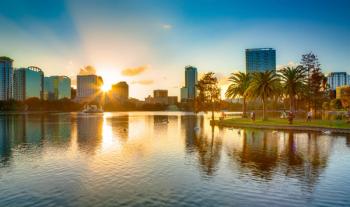
COVID-19 Infection in Children Associated with Post-COVID Conditions, Including Fatigue, Weakness
SARS-CoV-2 infection was associated with post-COVID-19 conditions for children, with associated risk factors including length of hospitalization, number of acute symptoms, and older age.
SARS-CoV-2 infection is associated with post-COVID-19 conditions in children, according to a study published in JAMA Network Open.
The authors recommend guidance and follow-up for SARS-CoV-2-positive children, particularly hospitalized children who have numerous acute symptoms and are older.
“A comprehensive understanding of pediatric [post-COVID-19 conditions] is required to inform public health policies and guide the care of high-risk children,” the authors wrote.
Researchers conducted a prospective multinational cohort study to estimate the proportion of SARS-CoV-2-positive children with post-COVID-19 conditions, defined as any persistent, new, or recurrent health problems reported in the 90-day follow up survey. They compared the prevalence of post-COVID-19 conditions among SARS-CoV-2-positive children, stratified by hospitalization status, with a matched cohort of SARS-CoV-2-negative children.
Researchers also identified and assessed risk factors associated with post-COVID-19 conditions in this cohort.
The study included patients from 36 of 39 emergency departments (EDs) in the Pediatric Emergency Research Network COVID-19 Study. Participants were recruited between March 7, 2020, and January 20, 2021, in 8 countries: Argentina, Canada, Costa Rica, Italy, Paraguay, Singapore, Spain, and the United States.
Eligible participants included children younger than 18 years of age who underwent testing for SARS-CoV-2 at participating EDs because of symptoms or epidemiologic risk factors. Actual participants included 1884 SARS-CoV-2 positive children who completed 90-day follow-up. Of these, 1686 children were frequency matched by hospitalization status, country, and recruitment date with 1701 SARS-CoV-2 negative controls.
A total of 8642 children were enrolled, with 2368 (27.4%) testing positive for SARS-CoV-2. The 1884 who completed follow-up had a median age of 3 years and were mostly (52.8%) boys.
Post-COVID-19 conditions were reported by 110 SARS-CoV-2 positive children (5.8%; 95% CI, 4.8%-7.0%), including 44 of 447 children hospitalized during acute illness (9.8%; 95% CI, 7.4%-13.0%) and 66 of 1437 children not hospitalized during acute illness (4.6%; 95% CI, 3.6%-5.8%). Similar symptoms were reported by 5.0% of the matched hospitalized children without SARS-CoV-2 infections and 2.7% of matched non-hospitalized children without SARS-CoV-2 infections.
The most common post-COVID-19 condition symptoms among SARS-CoV-2 positive children were systemic, fatigue or weakness (1.8%), and respiratory, cough, difficulty breathing, or shortness of breath (2.0%). Fatigue and weakness were the most common post-COVID-19 conditions overall.
Multiple characteristics were associated with reporting at least 1 post-COVID-19 condition at 90 days, including being hospitalized for 48 hours or more, having 4 or more symptoms reported at the index ED visit, and being 14 years of age or older.
SARS-CoV-2 positive children were more likely to report post-COVID-19 conditions compared with those who tested negative, regardless of hospitalization. SARS-CoV-2 positivity was found to be associated with reporting post-COVID-19 conditions after the index ED visit (aOR, 1.63 [95% CI, 1.14-2.35]), specifically systemic health problems, such as fatigue, weakness, and fever.
Approximately 10% of children hospitalized with acute SARS-CoV-2 infections and 5% of those discharged from the ED reported post-COVID-19 conditions at 90 days. Though these rates were only slightly higher than rates among SARS-CoV-2-negative controls, the authors hope that these findings can inform public health policy decisions regarding COVID-19 mitigation strategies for children and screening approaches for post-COVID-19 conditions among those with severe infections.
The study had some limitations. Because participants were enrolled prior to January 20, 2021, the findings of this study cannot be extrapolated to emerging SARS-CoV-2 variants or children who do not seek ED care.
However, the authors note that to their knowledge, this cohort study is the first to explore post-COVID-19 conditions among children seeking ED care. They highlight strengths including a SARS-CoV-2-negative control group, prospective data collection, and consistent and identical follow-up for all participants.
Reference
Funk A L, Kuppermann N, Florin T A, et al. Post-COVID-19 conditions among children 90 days after SARS-CoV-2 infection. JAMA Netw Open. 2020;5(7):e2223253.
Newsletter
Stay informed on drug updates, treatment guidelines, and pharmacy practice trends—subscribe to Pharmacy Times for weekly clinical insights.




















































































































































































































